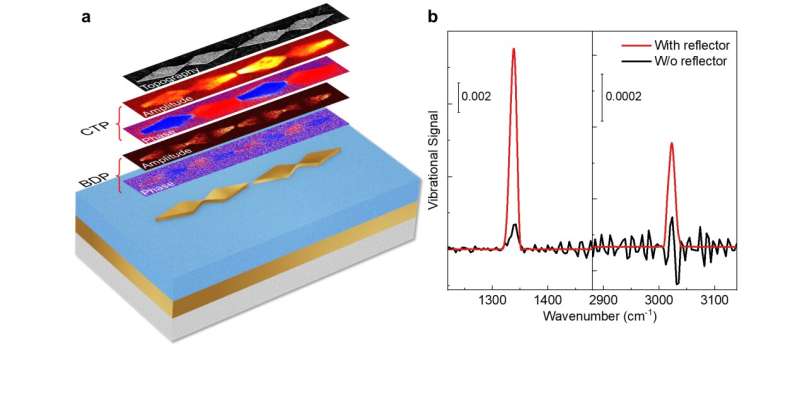Phys.org January 6, 2022
An international team of researchers (USA – UC Santa Barbara, China) designed and fabricated a multiscale nanobridged rhombic antenna that supported two dominant resonances in the charge-transfer plasmon (CTP) band and a bridged dipolar plasmon (BDP) band which looks like a quadruple resonance. Compared with other nanobridged structures, such as nanobridged-disks or rectangles, the nanobridged rhombic antenna (NBRA ) shows distinct multiband resonances in the mid-infrared region in the simulated extinction spectra. The hotspots of the NBRA are located at the extremities of the structure, while the hotspots of nanobridged-disks or rectangles at the CTP resonance are distributed dispersedly. The main hotspots associated with the two resonant bands are spatially superimposed, enabling boosting up the local field for both bands by multiscale coupling. With large field enhancements, multiband detection with high sensitivity to a monolayer of molecules was achieved when using SEIRA spectroscopy. The work provides a new strategy to activate high-order modes for designing multiband MIRAs with both nanobridges and nanogaps for such MIR applications as multiband SEIRAs, IR detectors, and beam-shaping of quantum cascade lasers in the future…read more. Open Access TECHNICAL ARTICLE

Sketch, topography, and near-field imaging of a NBRA dimer…Credit: Compuscript Ltd